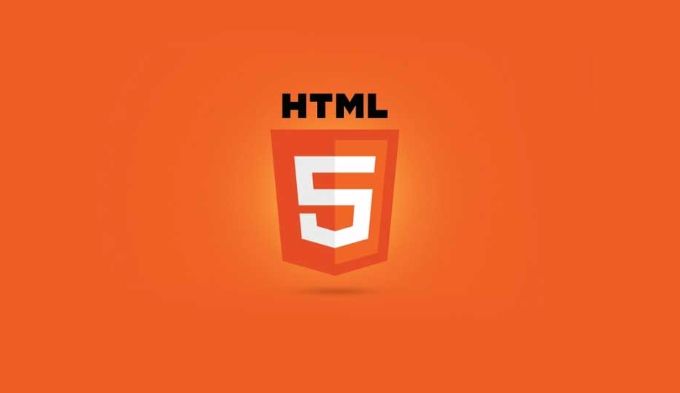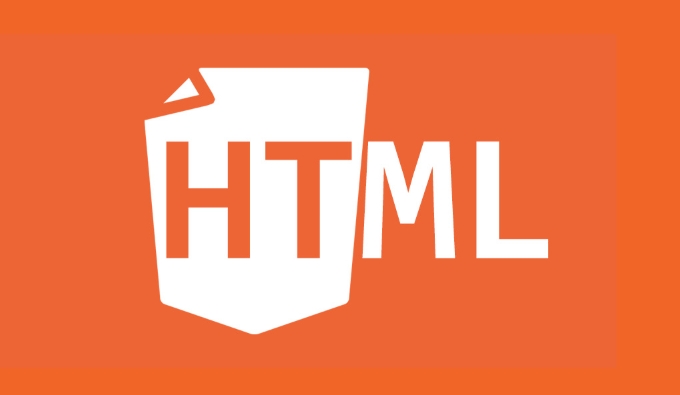The core of solving the performance problem of "off-screen content" on the mobile terminal of H5 page is to control its loading timing and method. Specific measures include: 1. Delay loading pictures and components, using IntersectionObserver to monitor the viewport entry events, and priority loading of the first screen content; 2. Loading content in chunks to avoid excessive rendering at one time, using the skeleton screen to occupy the place-by-place and dynamically inserting the real content; 3. Delay the execution of animations and scripts until the corresponding elements enter the viewport, reducing the initial load; 4. Using the skeleton screen to improve user perception and experience and alleviate waiting anxiety. These methods can effectively optimize the speed of the first screen and improve the user experience.

When the H5 page is loaded on the mobile terminal, it often encounters problems that "off-screen content" affects performance. Simply put, if content that users cannot see at the beginning is also loaded together, it may slow down the first screen speed and even waste resources. The core of solving this problem is to control the loading timing and method of off-screen content .

Delay loading pictures and components
Many H5 pages will request all pictures back at once, even if they are off-screen. This not only wastes traffic, but also slows down the first screen.
- Images can be loaded using Lazy Load and then loaded when scrolling to the visible area quickly.
- Components can also do similar processing, such as some folded panels and bottom advertising spaces, which do not render or only occupy a single position.
Implementation method:

- Use IntersectionObserver to listen to whether an element enters the viewport
- The picture can be used with
<img src="/static/imghw/default1.png" data-src="https://img.php.cn/upload/article/000/000/000/175278097395583.jpeg" class="lazy" loading="lazy" alt="H5 Content Visibility for Offscreen Content Performance" >, and the compatibility is already good - Lazy loading functions provided by third-party libraries such as LazyLoad.js or Vue/Lodash can also be used.
After doing this, the page opens faster and the user experience is better, especially for users who are not very good at the network.
Load content in chunks to avoid too much rendering at once
Sometimes there is too much content on a page, and it will be rendered all the time regardless of whether it is on the screen or not, and the result will be a long time for lag or white screen.

The recommended approach is:
- Split the content according to the module and give priority to rendering the visible part
- The off-screen module can be rendered without rendering before the user scrolls, or only the skeleton screen is retained
- Dynamically insert real content when scrolling nearby
For example, on the e-commerce details page, the evaluation area is not on the screen at the beginning, so you can leave a skeleton structure and wait until the user slides over before pulling the data to render. This not only saves initial resources, but also improves interaction speed.
Pay attention to animation and script execution timing
Some pages like to play various animations as soon as they come up, or run a bunch of scripts. In fact, if these operations are applied to off-screen elements, they are completely redundant.
Optimization suggestions:
- Try to wait until the element appears in the viewport before triggering the animation
- If script logic is prepared for off-screen content, delay execution or loading on demand
- You can use scroll or resize events to determine when to activate
For example, a parallax scrolling effect, if enabled only when the user scrolls to that area, will not affect the initial performance.
Use the skeleton screen to enhance perception experience
Although it does not directly reduce the burden of off-screen content, the skeleton screen can effectively alleviate users' waiting anxiety. It is equivalent to displaying a rough layout structure before the real content is loaded.
- The skeleton screen is small in size and loads quickly
- What users see is structured placeholding and will not feel blank
- Combining lazy loading, both vision and performance can be taken into account
Many frameworks now have ready-made skeleton screen plug-ins, which can be generated in advance during development, or they can be dynamically built based on the interface return.
Basically these ideas. Controlling the loading order, on-demand rendering, and delayed execution are all based on the principle of "the user is not in a hurry to deal with what is currently invisible". It doesn't seem complicated, but it's easy to ignore the details, especially when the project is rushing to progress.
The above is the detailed content of H5 Content Visibility for Offscreen Content Performance. For more information, please follow other related articles on the PHP Chinese website!

Hot AI Tools

Undress AI Tool
Undress images for free

Undresser.AI Undress
AI-powered app for creating realistic nude photos

AI Clothes Remover
Online AI tool for removing clothes from photos.

Clothoff.io
AI clothes remover

Video Face Swap
Swap faces in any video effortlessly with our completely free AI face swap tool!

Hot Article

Hot Tools

Notepad++7.3.1
Easy-to-use and free code editor

SublimeText3 Chinese version
Chinese version, very easy to use

Zend Studio 13.0.1
Powerful PHP integrated development environment

Dreamweaver CS6
Visual web development tools

SublimeText3 Mac version
God-level code editing software (SublimeText3)

Hot Topics
 Adding drag and drop functionality using the HTML5 Drag and Drop API.
Jul 05, 2025 am 02:43 AM
Adding drag and drop functionality using the HTML5 Drag and Drop API.
Jul 05, 2025 am 02:43 AM
The way to add drag and drop functionality to a web page is to use HTML5's DragandDrop API, which is natively supported without additional libraries. The specific steps are as follows: 1. Set the element draggable="true" to enable drag; 2. Listen to dragstart, dragover, drop and dragend events; 3. Set data in dragstart, block default behavior in dragover, and handle logic in drop. In addition, element movement can be achieved through appendChild and file upload can be achieved through e.dataTransfer.files. Note: preventDefault must be called
 What is the purpose of the input type='range'?
Jun 23, 2025 am 12:17 AM
What is the purpose of the input type='range'?
Jun 23, 2025 am 12:17 AM
inputtype="range" is used to create a slider control, allowing the user to select a value from a predefined range. 1. It is mainly suitable for scenes where values ??need to be selected intuitively, such as adjusting volume, brightness or scoring systems; 2. The basic structure includes min, max and step attributes, which set the minimum value, maximum value and step size respectively; 3. This value can be obtained and used in real time through JavaScript to improve the interactive experience; 4. It is recommended to display the current value and pay attention to accessibility and browser compatibility issues when using it.
 How can you animate an SVG with CSS?
Jun 30, 2025 am 02:06 AM
How can you animate an SVG with CSS?
Jun 30, 2025 am 02:06 AM
AnimatingSVGwithCSSispossibleusingkeyframesforbasicanimationsandtransitionsforinteractiveeffects.1.Use@keyframestodefineanimationstagesforpropertieslikescale,opacity,andcolor.2.ApplytheanimationtoSVGelementssuchas,,orviaCSSclasses.3.Forhoverorstate-b
 What is WebRTC and what are its main use cases?
Jun 24, 2025 am 12:47 AM
What is WebRTC and what are its main use cases?
Jun 24, 2025 am 12:47 AM
WebRTC is a free, open source technology that supports real-time communication between browsers and devices. It realizes audio and video capture, encoding and point-to-point transmission through built-in API, without plug-ins. Its working principle includes: 1. The browser captures audio and video input; 2. The data is encoded and transmitted directly to another browser through a security protocol; 3. The signaling server assists in the initial connection but does not participate in media transmission; 4. The connection is established to achieve low-latency direct communication. The main application scenarios are: 1. Video conferencing (such as GoogleMeet, Jitsi); 2. Customer service voice/video chat; 3. Online games and collaborative applications; 4. IoT and real-time monitoring. Its advantages are cross-platform compatibility, no download required, default encryption and low latency, suitable for point-to-point communication
 How to check if a browser can play a specific video format?
Jun 28, 2025 am 02:06 AM
How to check if a browser can play a specific video format?
Jun 28, 2025 am 02:06 AM
To confirm whether the browser can play a specific video format, you can follow the following steps: 1. Check the browser's official documents or CanIuse website to understand the supported formats, such as Chrome supports MP4, WebM, etc., Safari mainly supports MP4; 2. Use HTML5 tag local test to load the video file to see if it can play normally; 3. Upload files with online tools such as VideoJSTechInsights or BrowserStackLive for cross-platform detection. When testing, you need to pay attention to the impact of the encoded version, and you cannot rely solely on the file suffix name to judge compatibility.
 How to create animations on a canvas using requestAnimationFrame()?
Jun 22, 2025 am 12:52 AM
How to create animations on a canvas using requestAnimationFrame()?
Jun 22, 2025 am 12:52 AM
The key to using requestAnimationFrame() to achieve smooth animation on HTMLCanvas is to understand its operating mechanism and cooperate with Canvas' drawing process. 1. requestAnimationFrame() is an API designed for animation by the browser. It can be synchronized with the screen refresh rate, avoid lag or tear, and is more efficient than setTimeout or setInterval; 2. The animation infrastructure includes preparing canvas elements, obtaining context, and defining the main loop function animate(), where the canvas is cleared and the next frame is requested for continuous redrawing; 3. To achieve dynamic effects, state variables, such as the coordinates of small balls, are updated in each frame, thereby forming
 Understanding the autoplay policy changes affecting HTML5 video.
Jul 03, 2025 am 02:34 AM
Understanding the autoplay policy changes affecting HTML5 video.
Jul 03, 2025 am 02:34 AM
The core reason why browsers restrict the automatic playback of HTML5 videos is to improve the user experience and prevent unauthorized sound playback and resource consumption. The main strategies include: 1. When there is no user interaction, audio automatic playback is prohibited by default; 2. Allow mute automatic playback; 3. Audio videos must be played after the user clicks. The methods to achieve compatibility include: setting muted properties, mute first and then play in JS, and waiting for user interaction before playing. Browsers such as Chrome and Safari perform slightly differently on this strategy, but the overall trend is consistent. Developers can optimize the experience by first mute playback and provide an unmute button, monitoring user clicks, and handling playback exceptions. These restrictions are particularly strict on mobile devices, with the aim of avoiding unexpected traffic consumption and multiple videos
 Securing HTML5 web applications against common vulnerabilities
Jul 05, 2025 am 02:48 AM
Securing HTML5 web applications against common vulnerabilities
Jul 05, 2025 am 02:48 AM
The security risks of HTML5 applications need to be paid attention to in front-end development, mainly including XSS attacks, interface security and third-party library risks. 1. Prevent XSS: Escape user input, use textContent, CSP header, input verification, avoid eval() and direct execution of JSON; 2. Protect interface: Use CSRFToken, SameSiteCookie policies, request frequency limits, and sensitive information to encrypt transmission; 3. Secure use of third-party libraries: periodic audit dependencies, use stable versions, reduce external resources, enable SRI verification, ensure that security lines have been built from the early stage of development.






